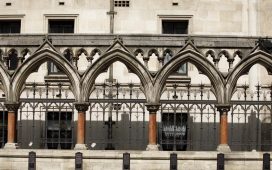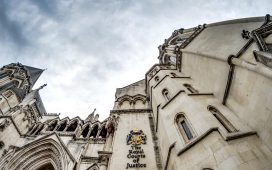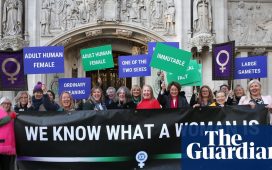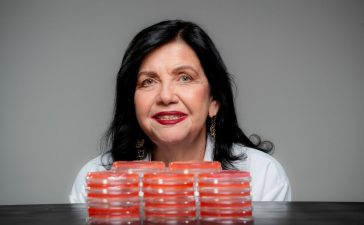Outwardly Reed Wischhusen lived a quiet, ordinary life, caring for his father, Alan, at their scruffy semi in the Somerset village of Wick St Lawrence and working nightshifts in a budget supermarket’s warehouse near Bristol.
On his Facebook page, Wischhusen, 32, described himself as “down to earth and very shy”, a lover of 80s and 90s music and video games. He seemed isolated and lonely, but law-abiding and harmless.
However, when police searched his home in November last year, they found an armoury of weapons and ammunition that Wischhusen had constructed or collected over the past decade including a homemade submachine gun, pistols, an antique rifle, live ammunition, silencers and a grenade.
He had gathered large quantities of substances and components including acids, timers, igniters, pressure cookers and ball bearings capable of being turned into homemade bombs or improvised explosive devices, as well as genuine items such as an Avon and Somerset police uniform, bullet-proof vests, handcuffs, knives and a set of locksmith’s master keys.
Shocked police were to find a “revenge plan” that detailed a scheme to assassinate former schoolmates and a teacher before carrying out a mass shooting at the school and then heading to Avon and Somerset police headquarters in Portishead 12 miles away to kill officers and staff by opening fire with machine guns and setting off bombs. “It has to happen,” he concluded.
Wischhusen said his plan was fantasy, that he had collected the guns and ammunition only to get back at the police for refusing him a firearms licence. He accepted he had components and chemicals that could be turned into bombs but said they were for experiments. And the revenge document was pure fantasy.
His time at the Priory school in Worle, Weston-super-Mare, was unhappy. He complained he was bullied. He was once pinned up against a wall and on another occasion was pushed into mud.
Wischhusen had a better time when he moved to Weston College but was disappointed in his lack of popularity with girls.
His interest in guns really began when a family friend talked to him about clay pigeon shooting and in 2009, when he was in his late teens, he applied for a firearms licence but was refused. He later tried to find out why and came to believe it was because he was judged to have “childlike views of the world”.
Wischhusen also applied to become a special (voluntary) constable with Avon and Somerset police but, again, was turned down, which also rankled.
He simmered. He became fascinated by Raoul Moat, the gunman who shot his former girlfriend, her new boyfriend, and a police officer in 2010. He joined a rifle club, got a job, and started researching online how to source and make weapons and ammunition. He found a “do-it-yourself submachine gun” guide and “full auto assault shotgun” construction plans.
Wischhusen also obtained a copy of Hit Man On-Line: A Technical Manual for Independent Contractors, a book written in 1983 by an American writer under the pseudonym Rex Feral which has been blamed for inspiring a triple murder in Maryland.
At the start of 2022, he began to write out his plans. “Revenge on my mind, it’s a powerful motivator,” he began. Wischhusen wrote that he would embark on a series of attacks, starting with a classmate who had pinned him against a wall.
“Soon I’ll be chasing him down with a silenced pistol,” he wrote. He identified other former schoolmates, a teacher who he said had humiliated him, and police staff. Of one police employee, he wrote he would “definitely waste him”.
Phase 1 was a “hitman-style” assault on 10 named people which he said would be carried out with a converted pistol with a silencer and wearing a disguise. The next, phase 2A, would be to go to Priory school, “shoot a few teachers dead” and throw pipe bombs “to stir things up”.
Phase 2B would be to head to Avon and Somerset police’s headquarters in Portishead during the panic that was bound to follow, set off fire alarms and when staff gathered outside detonate bombs and open fire.
He would then access the building, using ID from one of his victims, and set off a gas explosion – “like a mini version of the 1995 Oklahoma bombing”, he wrote – before killing himself.
A second option for this last part – phase 2C – was a “Columbine-style attack” in which he would ambush and kill staff outside the police HQ, then get in and open fire, throw pipe bombs from the upper windows and detonate a pressure-cooker bomb. Again, the attack would end with his suicide.
The prosecution claimed he was fascinated by mass killers such as the Dunblane gunman Thomas Hamilton. Wischhusen himself has conceded he had a macabre interest in mass shootings and cult suicide documentaries.
In May 2022, Wischhusen appeared to have had a change of heart. He walked into Nailsea police station and surrendered some of his weapons, including a handmade machine gun as part of a national amnesty. The officer who took the weapons from him was astonished by what he had brought in. Wischhusen refused to give his name and was allowed to walk free.
But he kept developing his weapons. When police caught up with him, he had six weapons, including another partly built submachine gun, a working handgun he had converted from a blank firing pistol and an antique rifle also capable of being fired.
Were his plans credible? After his arrest, gun and explosives experts examined his armoury in detail. A specialist who looked at the machine gun he had handed in during the amnesty said it was simple but “effective”.
As well as making and collecting the hardware needed, he had done some research on potential victims, paying for a report to check an address of one, checking the married name of a teacher he was targeting.
On 28 November 2022, two neighbourhood officers backed by two armed colleagues went to his home. Wischhusen appeared to be cooperative, showing the officers around the house but at one point – as an officer’s bodycam was to show – he tried to reach into the pocket of a coat hanging on the bannister where the converted pistol had been stashed, only to pull his hand away when an officer turned around.
He put the coat on and was allowed to go to an upstairs bathroom where he aimed the gun at his head and fired. The bullet lodged in his head but did not kill him. He came downstairs pointing the gun at the police and was shot three times.
He was in hospital for four months. After he was discharged, Wischhusen denied in a police interview that he had an obsession with guns, describing it instead as a passion.
Wischhusen’s actions have had a lasting impact. One of the firearms officers was clearly very emotional as he described how he thought he was going to die as the gunman came downstairs. Police were so worried about the impact the case would have that staff were only told about Wischhusen hours before his trial began. Those named in the “hitlist” and his former school have been shocked, the quiet village rocked by the revelation of what was going on behind the front door of an unremarkable semi.











